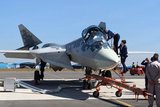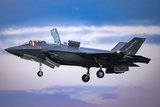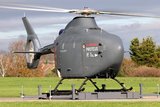Japan targets T-4 replacement ahead of GCAP as pressure mounts to modernise pilot training
The JASDF is looking for a replacement platform for its T-4 jet trainer fleet of more than 200 aircraft. (Photo: Jerry Gunner/Wikimedia Commons)
When issuing a request for information last October, the Japan Air Self-Defense Force (JASDF) got the ball rolling on finding a replacement platform for its aging Kawasaki T-4 intermediate jet trainers. After deadline extensions, the tender process closed on 8 May.
The JASDF possesses more than 200 domestically built T-4 jet trainers that were introduced from 1988 onwards, but the range of options for replacing them is relatively narrow.
With Japan’s air force now flying fifth-generation F-35A and F-35B fighters, and with Global Combat Air Programme (GCAP) fighters on the way a decade later, the ageing T-4 is wholly
Already have an account? Log in
Want to keep reading this article?
More from Air Warfare
-
![Northrop Grumman to fly new Project Talon CCA by late 2026]()
Northrop Grumman to fly new Project Talon CCA by late 2026
The newly unveiled collaborative combat aircraft looks to strike a balance between capability and cost-effectiveness, according to the company.
-
![MBDA and Lockheed move closer to F-35A Meteor flight tests]()
MBDA and Lockheed move closer to F-35A Meteor flight tests
Following the completion of successful ground tests, one more exercise remains before flight testing can begin.
-
![Leonardo’s Proteus concludes ground tests with maiden flight on horizon]()
Leonardo’s Proteus concludes ground tests with maiden flight on horizon
The technology demonstrator forms part of a wider effort to help the Royal Navy explore the potential of uncrewed systems supporting its existing crewed aviation platforms.
-
![Airbus MQ-72C Lakota Connector progress on track ahead of pending USMC decision]()
Airbus MQ-72C Lakota Connector progress on track ahead of pending USMC decision
The MQ-7C uncrewed aircraft is currently undergoing further internal flight tests ahead of a government test event anticipated for next year.






















